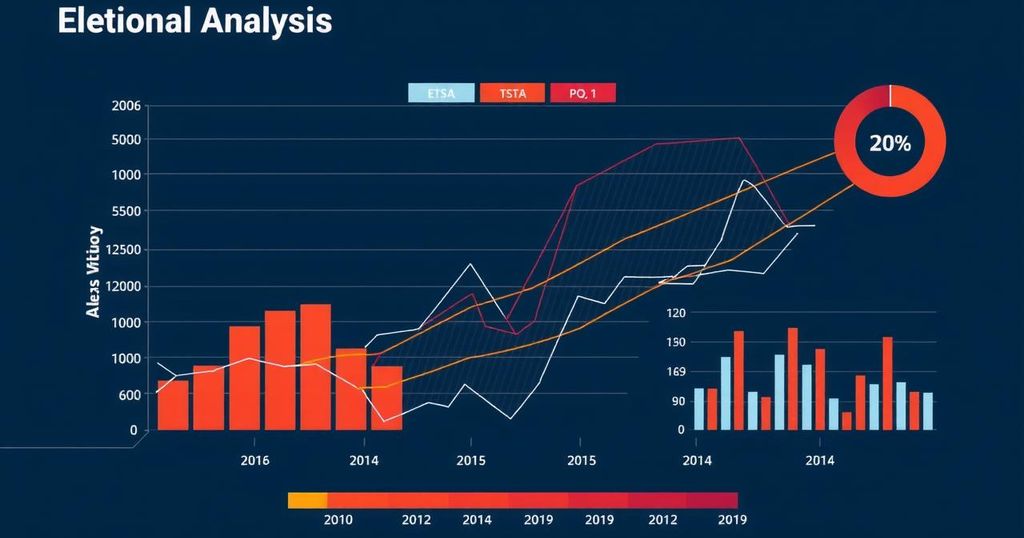Donald Trump’s electoral victory was influenced by low approval ratings for the Biden administration, a shift in demographic support, and significant gains among suburban and rural voters. Harris’s campaign faced challenges due to consumer sentiment and Trump capitalized on these factors. The narrow victory signifies a continued volatility in American politics, warning against Republican overconfidence.
In the recent election, Vice President Kamala Harris assumed the campaign after President Joe Biden, facing significant political hurdles, including an approval rating of 39%—below the pivotal 50% threshold traditionally required for re-election victories since Nixon. Additionally, consumer sentiment, as indicated by the University of Michigan’s index, stood at 70.1, further complicating her campaign. This combination of low approval ratings and unfavorable consumer sentiment contributed heavily to her defeat against Donald Trump. Trump’s success was attributed to various demographic gains, as he improved his standing notably among Latino men, who shifted from supporting Biden by 23 points to favoring Trump by 12. His performance with young voters also showcased a remarkable increase; while Biden led by 24 points, Harris only managed an 11-point advantage. Furthermore, Trump solidified his base in rural areas and showed improved performance in suburbs, countering the losses he faced in 2020. Despite Trump’s victory, it is vital to note that it was not a sweeping mandate. The margins were narrow, and the popular vote difference will likely remain within several percentage points. This election marked yet another cycle in a history of fluctuating electoral power, with voters shifting allegiances more frequently this century. Trump cannot assume that every aspect of his agenda will be welcomed, as voter expectations could pivot if the GOP fails to deliver essential goals or if he overreaches. Should trends continue, a Democratic resurgence could occur in future elections, primarily underlining the fickle nature of voter sentiment.
The article examines the factors contributing to Donald Trump’s electoral victory, highlighting key political dynamics in the lead-up to the election. It discusses Vice President Kamala Harris’s campaign strategy, the implications of low approval ratings for President Biden, and the effect of inflation and consumer sentiment on voter behavior. Furthermore, it reflects on demographic shifts in support for Trump, as well as the broader context of electoral volatility in the United States, where voter allegiance frequently changes, impacting party control across various election cycles.
In summary, Donald Trump’s victory reflects significant demographic shifts and dissatisfaction with the current administration. The impact of low approval ratings and poor consumer sentiment played crucial roles in Harris’s performance. However, the narrow margins observed in this election signal that the political landscape remains volatile. Republicans should approach their newfound success with caution, recognizing the potential for rapid change in voter sentiment that could favor Democrats in future contests.
Original Source: www.usnews.com







